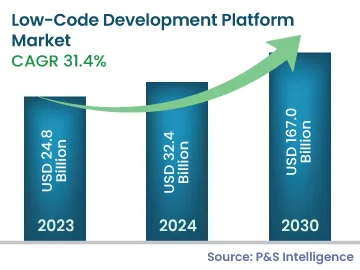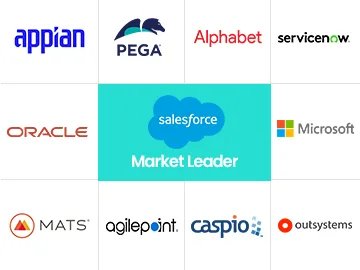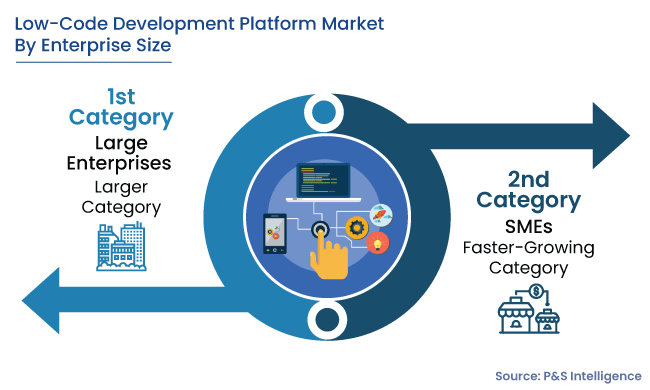The low-code development platform industry will reach a value of USD 167.0 billion in 2030.
The market for low-code development platform will reach a value of USD 32.4 billion in 2024.
The industry for low-code development platform is very fragmented in nature, with the existence of some major players.
North America is leading the industry for low-code development platform, with a share of 45% in 2023.
What is the leading deployment type in the low-code development platform industry?+
Cloud is the leading deployment type in the low-code development platform industry, and it will also propel at a higher rate, of 31.5%, during 2024–2030.
The growing demand for optimum TTM strategy is the latest trend in the low-code development platform market.





